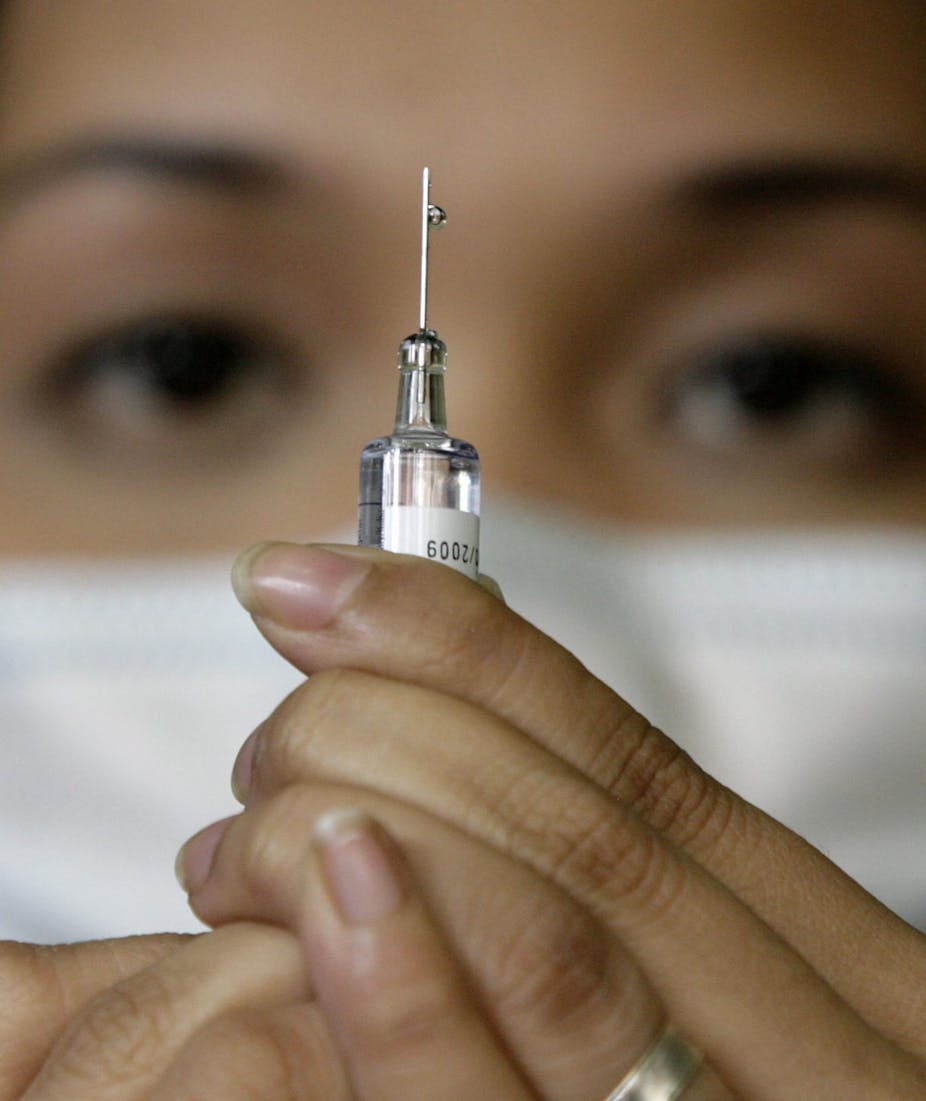When someone is adversely affected by a vaccine in Australia, their only way to receive compensation is through the courts. But this is not the case worldwide.
Vaccines undergo rigorous testing to ensure they don’t have serious negative side effects. But very rarely, they can harm those they aim to protect. This is a very small recognised risk with some vaccines.
Internationally, 19 countries have no-fault compensation schemes. Germany, for example, has had a government-run no-fault compensation scheme for 50 years.
In these countries, governments recognise that vaccinations provide benefit to both the individual and the community.
The community benefit is described as herd immunity, which is reached when enough members of the community are immunized to prevent transmission of disease to other members of the community, including those who are not immunised.
So when a vaccination results in severe or long-term injuries, the injured person facing a sudden, unequal share of the social cost should arguably be compensated by the community that promoted the vaccine.
Vaccines in Australia
Vaccines have served Australia well for the last 50 years. We spend more than $400 million annually on our National Immunisation Program and fund vaccines against 12 diseases, from influenza to polio.
We want vaccines to be safe: if the disease being vaccinated against is rare with potential long-term problems, such as polio, we want the vaccine to be incredibly safe.
This is why Australia moved from the live attenuated oral polio vaccine, which causes a disease indistinguishable from polio in about one in two-and-a-half million doses, to the inactivated polio vaccine, which does not carry the same risk.
For more common diseases, such as influenza, we accept the possibility of a few side effects but don’t expect serious unwanted consequences.
Sadly, this expectation is not always met.
In 2010, for example, an unexpectedly large number of febrile convulsions (fits that occur in young children because of high temperatures) were experienced by children after they were vaccinated with CSL’s Fluvax.
While most of the convulsions didn’t have any lasting effects, for at least one family, the consequences will last a lifetime.
CSL’s influenza vaccine for young children was withdrawn from the market in Australia and New Zealand as a result and is no longer recommended for children under nine years of age.
The Therapeutic Goods Administration (TGA) recently changed this to nine from five years after a letter from the U.S. Food and Drug Administration to CSL was made public.
In the United States, where the vaccine is available under a different trade name, it is not licensed for children under nine.
So far, there’s no firm explanation for the febrile convulsions.
And when all the investigations into the vaccine have been completed, it could turn out that no fault can be shown – not in the manufacturing process, the regulatory process or the administration of the vaccine.
This illustrates a general problem for people seeking compensation.
Parents of children who believe they have suffered serious side effects from any vaccine will be required to prove that someone’s at fault in court.
It’s an expensive, timing-consuming and stressful process – at a time when more stress is the last thing a family needs.
Who to blame?
Usually fault is difficult, or impossible, to prove, even though it may be very likely that the vaccine was the cause of the problem.
And without a definitive proof of fault, there is no compensation.
A no-fault compensation scheme could easily solve this problem. Those seeking compensation wouldn’t need to prove someone was at fault for the negative effects of a vaccine.
It would still be necessary to determine a causal relationship between the vaccine and the adverse event, but countries in which these schemes operate have mechanisms for this.
This is usually achieved by a committee that adjudicates on causation. Some adverse events accepted as caused by vaccines are listed in a table in the United States. This facilitates early compensation for these events.
Economics and social justice
The core issue for introducing a no-fault compensation scheme is how it would be funded.
There are multiple ways:
through a vaccine levy;
as part of a much broader injury compensation scheme;
through general tax revenue or;
The United States, for example, has a vaccine levy which, despite having 2580 claimants since 1989, is running a surplus of about US$3 billion.
No-fault compensation is based on the ethical principle of redistributive justice, sometimes also called reciprocity. The principle is that a person harmed while helping the community should in turn be helped by the community.
With a growing international support for no-fault compensation, now is a good time to ask why Australia does not have a mechanism for compensating people when things go unexpectedly and seriously wrong after they receive a vaccine.
This article is based on research published in the Bulletin of the World Health Organization and an editorial in the Medical Journal of Australia .

